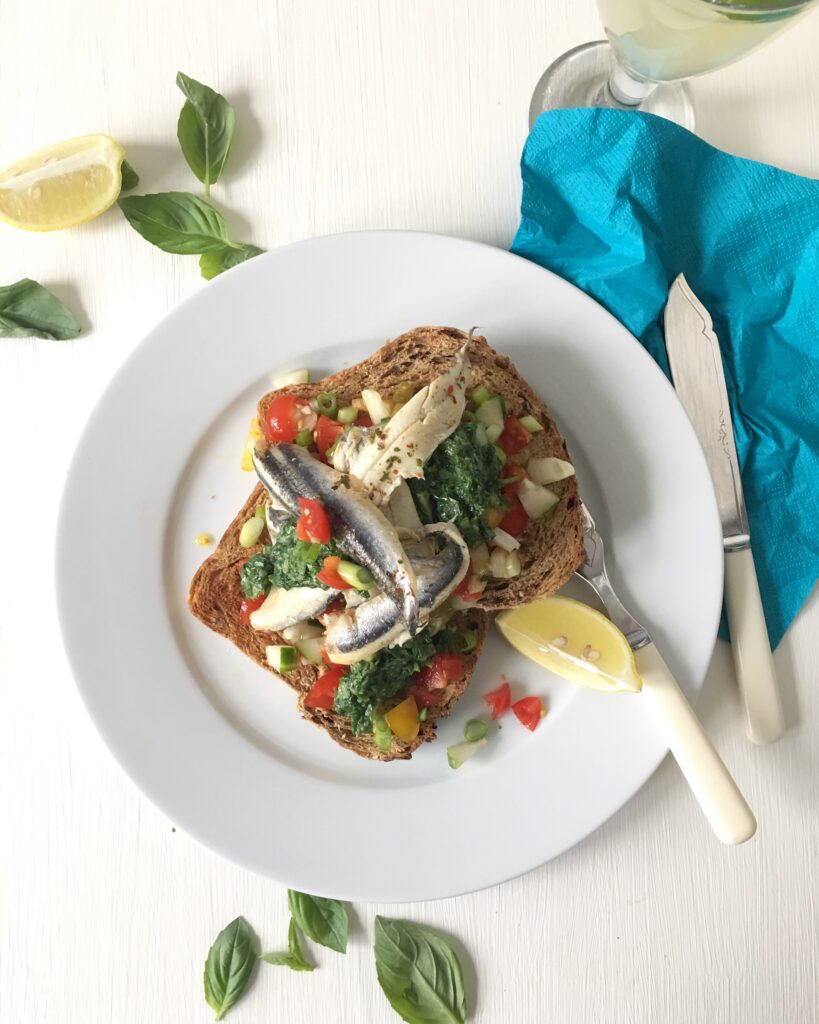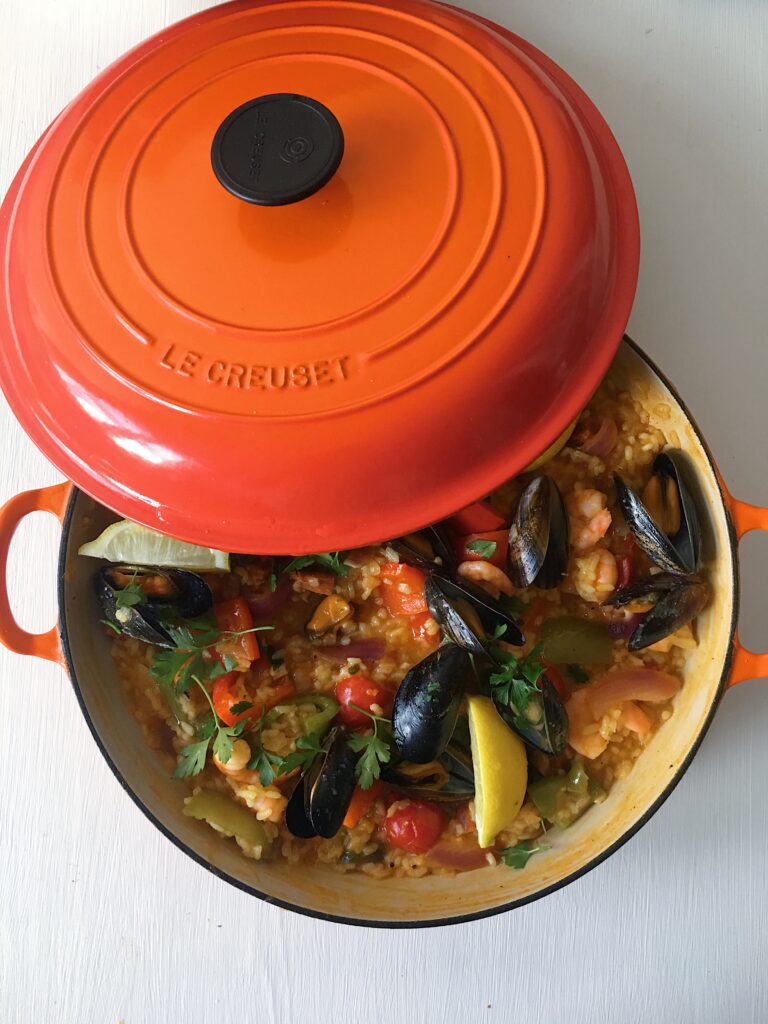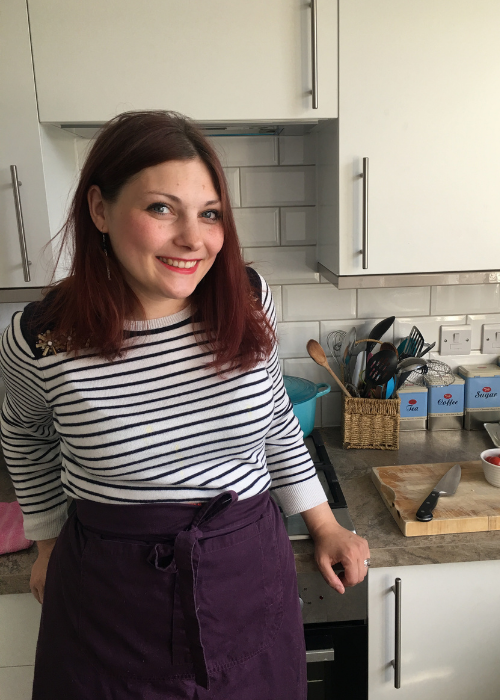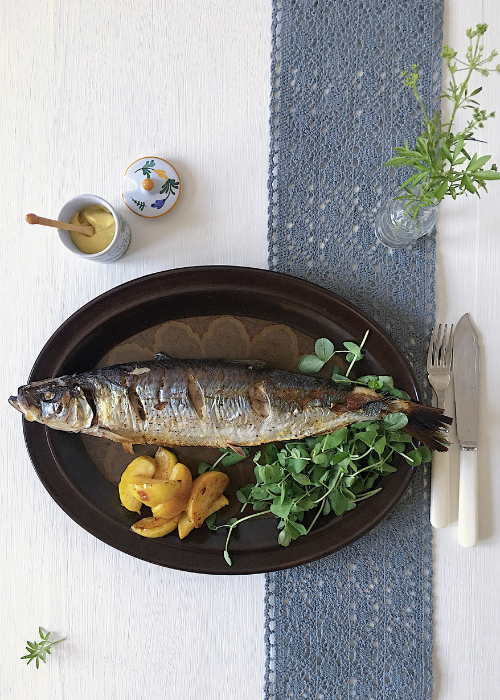Meet the Urban Fish Wife
Caroline Rye is a passionate foodie and a real jack of all trades when it comes to seafood. From food writing and seafood consultancy to recipe development and social media, her mission is clear: inspiring people to enjoy delicious and versatile fish and shellfish, and sharing seaside stories from her home in Edinburgh.
Where did the idea for Urban Fish Wife come from and what drew you to make the transition in your career from management and communications, to seafood and storytelling?

Food was always my passion but I had, like many people, just fallen into a 9-5 office job after leaving university. I was working in project management but it wasn’t my dream job. I eventually had the opportunity to take a sabbatical and went to Ballymaloe Cookery School in Ireland to do their 12 week professional cookery course, which was a lifelong dream.
Afterwards I worked for Seafish, in a comms and marketing role where I worked on lots of different projects and campaigns like Seafood Week and their education programme. I began to think there might be an opportunity to combine my different skills and pursue a seafood-related project of my own.
It occurred to me that I could create a blog and develop new seafood recipes. Newhaven in Edinburgh was famous for its ‘fishwives’ who sold fish door-to-door literally from their own backs, right up until the 50s! This inspired ‘Urban Fish Wife’ and it just went from there.
How much do you know about the fishermen who land the seafood you buy? Would you like to know more?
I would love to know more but the supply chains for seafood can be very long compared to other types of food – like meat for instance. I could go to the farmers market and buy a leg of lamb from the farmer who produced it, ask them questions about it and find out how the animal was raised etc. But with seafood it is not that easy. However, we are seeing fishermen these days reaching out on social media, sharing the experience of being at sea and what they do, which is great. There are also more opportunities to buy direct from the boat too. I think the more we know about the people that produce our food, especially with such a dangerous profession as fishing, the more we can appreciate it.

Lots of people in the UK stick to the ‘top 5’ seafood species: cod, salmon, prawns, haddock and tuna. How is eating ‘unpopular’ species important for sustainability, and how do you inspire people to try something new?
Yes, we have been dependent on the big 5 for a long time in the UK and that seems to shape a lot of people’s eating habits, especially when it comes to home cooking. There’s such a diverse range of seafood, the more we can eat to take pressure off the stocks of the more popular species, the better. We want to leave a healthy marine ecosystem for future generations to enjoy. As a mother and an aunt, that is the most important thing for me and drives everything I do. If we can reduce some of that fear around fish and make recipes quick, easy and accessible, people are more inspired to try something new.
How did your experience at Ballymaloe Cookery School shape your seafood cooking?
It was an incredible experience. I went from working in an office with a view of a scrapyard, to watching the sunrise whilst picking herbs in the garden before starting cooking for the day. As students, we had access to the best produce – and seafood was no exception. We had fresh fish from Ballycotton Seafood down the road nearly everyday. We learnt to prepare lobster, crab, mussels and scallops, as well as flatfish and round fish from scratch. The main things I learnt were to respect the produce and to bring out those flavours and display them to maximum effect. With great quality seafood, it doesn’t need too much doing to it, definitely less is more.

Scotland is such an incredible place for seafood. Which places are your favourite to visit and what local specialties do you most enjoy?
We like going out to the Lobster Shack in North Berwick during the summer and love the Fishmarket at Newhaven, which I think is the best seafood restaurant in town and is also child friendly. When I lived in Glasgow I loved Crabshakk in Finnieston, especially their wonderful oysters and crab cakes in anchovy butter! It’s the other side of town for me but Welch fishmongers have the biggest selection of seafood I’ve seen in Edinburgh. I love Cullen Skink, which is a rich soup made with smoked haddock originating from the small town of Cullen in the North East.
Tell me about your involvement in the Sustainable Fish Cities campaign in Edinburgh.
So I am coordinating this campaign in Edinburgh, which is originally from Sustain – the alliance for better food and farming – and they have run it in other cities across the UK. The campaign has been brought to Edinburgh by Open Seas, the marine conservation charity, and Edible Edinburgh who are the city’s sustainable food partnership. We’ve created the campaign as ‘Edinburgh Fish City‘ and we are asking businesses that sell seafood to sign up to the Sustainable Fish Cities pledge.
This commits them to greater standards of traceability and labelling, and also to not sell species ‘red listed’ by the Marine Conservation Society’s Good Fish Guide. They also commit to promoting more sustainable species, like those ‘green rated’ by the Guide, and certified seafood like the MSC blue label as well as promoting small scale fishing.
Originally the campaign looked at restaurants and public procurement, but with the impact of Covid-19 we are widening the campaign to direct sellers, fishermen and other suppliers who are selling seafood and looking for alternative markets as demand for exports and the hospitality trade has fallen. We have created a ‘seafood directory’ on the website to list all businesses that have signed up, and we hope that will become a hub for people looking to buy sustainable seafood. If anyone reading wants to know more or has a business and wants to sign up, please get in touch!

What role do you think social media plays in getting members of the public into local seafood?
More and more people are getting into seafood on social media. I’ve noticed that even in the last couple of years there are more businesses like fishmongers and restaurants sharing what they have in or on the menu, and sharing updates of fresh seafood that has just been delivered. Because seafood has to be so fresh and social media is so instant, it can be a really great way for businesses to connect with consumers and show them what they have available.
Are you excited about Discover Seafood launching? How do you think it will help encourage people to learn more about sustainable seafood and the importance of the small-scale fishing industry?
Absolutely! Back during my days at Seafish I used to follow Fish on Friday, and I was excited to see it was getting a relaunch! We need as many people as possible to find out more about where their food comes from and this is a great opportunity for people to learn more about seafood and the coastal communities that bring it to them. Making what can be complicated issues like sustainability easy to follow and understand is vital if we want people to make the right choices when it comes to buying seafood. Helping people find out more about seafood across the UK, including what’s being caught in which ports and what’s in season, is all really important and gives people more context and insight, alongside things like recipes and cooking inspiration. Learning about small-scale fishing and those still doing things in a traditional way helps everyone understand more about our history and heritage as an island nation.

For seafood recipes and cooking inspiration, keep up to date with Caroline on Instagram @urbanfishwife and www.theurbanfishwife.com





